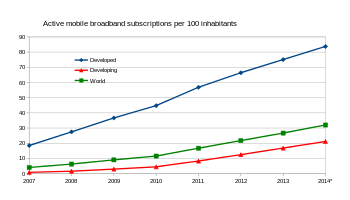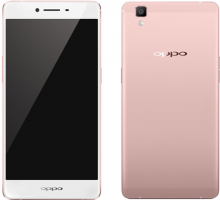- Texas Instruments
- Download Analog Devices Mobile Phones & Portable Devices Driver Download
- Download Analog Devices Mobile Phones & Portable Devices Drivers
- Download Analog Devices Mobile Phones & Portable Devices Driver Wireless
[2020 Updated] Download USB Drivers for Any Android (Samsung/ Motorola /Sony/ LG/ HTC/ ASUS/ Huawei and others): .Here we are sharing all the latest Android USB Drivers for Windows and Mac. You can download them from the download section below and install them on your PC or Mac
Texas Instruments
USB Drivers are one of the must-have tools to be installed on your PC or Mac. Because of that, your mobile device interacts with your PC.These work as Bridge between your Phone and your computer. The USB drivers help us to connect our phone to the computer and perform tasks like transferring data, syncing your device with a PC. They help us to connect our Android devices to tools like Odin, Sony Flash tool, and SuperOneClick.
Below, we are sharing the links to USB drivers for most of the popular Android device manufacturers like Samsung, LG, Sony, Google, HTC, Motorola, Dell, etc. These USB drivers are safe to use as they are from their respective manufacturers. All the links are valid and official. We recommend you to download the latest USB drivers
- The history of mobile phones covers mobile communication devices that connect wirelessly to the public switched telephone network. While the transmission of speech by signal has a long history, the first devices that were wireless, mobile, and also capable of connecting to the standard telephone network are much more recent.
- Right click on Android Phone and select Update driver software. After that, a new dialog box will appear from which select “Browse my computer for driver software”. Select the “Let me pick from a list of device drivers on my computer” option. Select “Show All Devices” in the drop-down menu.
Creating and administering Analog Devices and Common Area Phones in Lync and Skype for Business is quite tedious. (I have a terrible record for forgetting to assign a PIN to Common Area Phones) Inspired by a customer (and to the horror of a purist peer) I've created a PowerShell script that provides a GUI for the administration of both.
 [note type=”important”]It is highly recommended to Enable USB debugging on android smartphones before performing any task in the fastboot mode. [/note]
[note type=”important”]It is highly recommended to Enable USB debugging on android smartphones before performing any task in the fastboot mode. [/note]Download USB Drivers for Android
Samsung USB Drivers
| Latest Samsung Drivers | Download |
| Download Latest Samsung Kies | Download |
| Samsung Android ADB Interface Driver v2.9.510.0 | Download |
OnePlus USB Drivers
| Latest OnePlus USB Drivers (Windows and Mac) | Download |
For MediaTek VCOM Driver
| MediaTek VCOM MTK Drivers (Updated) | Download |
Motorola USB Driver
| Latest Motorola USB Drivers (Win & Mac) | Download |
Google USB Drivers
| Latest Google USB Drivers | Download |
HTC USB Drivers
| Latest HTC USB Drivers 4.17.0.001 | Download |
| HTC Sync Manager | Download |
Sony USB Drivers
| Latest Sony USB Drivers | Download |
| Sony PC Companion | Download |
| Sony Bridge for Mac | Download |
LG USB Drivers
| Latest LG USB Drivers | Download |
| LG Flash and LG UP Tool | Download |
| LG UpperCut Tool | Download |
- LG United Drivers for Verizon | Mirror
Dell USB Drivers
| Latest Dell USB Drivers | Download |
Go to the link and choose your mobile device or tablet to download the specific version USB drivers.
Intel Android USB Drivers
| Latest Intell Android USB Drivers | Download |
ZTE USB Drivers
| Latest ZTE USB Drivers | Download |
LeEco USB Drivers
| Latest LeEco USB Drivers | Download |
ASUS USB Drivers
| Download Asus PC suite PC Link (drivers included) | Download |
Huawei USB Drivers
| Latest Huawei USB Drivers | Download (Check below) |
- Download HiSuite (drivers included) || Windows | Mac
Download Analog Devices Mobile Phones & Portable Devices Driver Download
Acer USB Drivers
| Latest Acer USB Drivers | Download |
Sharp USB Drivers
Amazon USB Drivers
| Latest Amazon USB Drivers | Download |
Pantech USB Drivers
| Latest Pantech USB Drivers (PC Suit) | Download |
XIAOMI USB Drivers
- Download Mi Phone Manager (PC Suite) | Mirror

Lenovo USB Drivers
| Latest Lenovo USB Drivers | Download |
Micromax USB Drivers
| Latest Micromax USB Drivers | Download |
Video Guide: Enable Developer Options, USB Debugging and OEM Unlock On Android
[note type=”important”]In case the above drivers do not work for you, do as described below:

Download Analog Devices Mobile Phones & Portable Devices Drivers
- Go to the official site of the manufacturer
- Type the name and model of your device in the search box.
- Select your device and click the Support tab/button.
- You will get the download link for the specific USB Drivers for your device.
- Download the drivers and install onto your computer. [/note]
If you have any question, feel free to ask in the comment below.
Rootmygalaxy a.k.a RMG was started in 2015 with a solo goal of Helping users with easy How-to guides. Slowly the website started sharing exclusive Leaks and Tech News. In these 5 years, we have been credited by the likes of Forbes, CNBC, Gizmodo, TechCrunch, Engadget, Android Authority, GSM Arena and many others. Want to know more about us? Check out ourAbout Us pageor connect with us ViaTwitter, Facebook, YoutubeorTelegram.
Cell phone manufacturers are increasingly pressed to provide status LEDs that can alert users to messages waiting, impending calendar appointments, and other notifications while the phone is in standby; indeed, several recent handset releases have received negative reviews for not having a notification LED. At the same time, users are demanding longer standby times from their phones. This pair of seemingly simple issues presents a surprisingly difficult dilemma to manufacturers: how can they power notification LEDs while keeping total standby consumption low?
Indicator LEDs are typically powered from a power-management IC (PMIC) or other small processor. This is satisfactory when the phone is awake, but the processor must keep track of the timing to automatically enable and disable each LED, even in sleep mode. Powering the entire PMIC for this function can add several milliamperes to the standby current draw. Table 1 provides an example of data and calculations showing that the average power consumption is dominated by the off-time quiescent current drain.
Table 1. Current Drain and Power Consumption with 7.5-s-Off/300-ms-On Blink Pattern, 10-mA LED Current, and 3.7-V Input
| Power Management | Iq, Off | Iq, On | Iq, Average | Power Consumption |
| Standard PMIC | 5 mA | 15 mA | 5.39 mA | 19.9 mW |
| ADP8866 | 300 µA | 11 mA | 710 µA | 2.6 mW |
| Lossless | 0 µA | 10 mA | 385 µA | 1.4 mW |
The ADP8866 LED driver, uniquely configured to deal with this challenge, is easily programmed to execute autonomous lighting programs on up to four indicator LEDs, with each LED having an off-time range from 100 ms to 25.2 seconds. When an autonomous lighting program is executing and the LEDs are off, the total IC current consumption is reduced to less than 300 µA. Also, since the ADP8866 controls all of the timing, the LEDs remain perfectly synchronized, even for complex or long-duration patterns. Consider the following two examples:
Example 1: Color Mixing Indicator LEDs
A mobile handset requires seven LEDs for its backlight display and two LEDs for indication. Due to cost and mechanical requirements, the handset manufacturer uses a red/green (RG) LED to implement efficient standby notification of three conditions: message waiting, low battery, and calendar appointment. For each of the three conditions a unique color is assigned to the LED: red, green, and yellow (red + green).
Download Analog Devices Mobile Phones & Portable Devices Driver Wireless
The ADP8866 offers an ideal solution to this common scenario, as shown in Figure 1. Seven of its nine LED channels illuminate the display; the red and green signals to the RG LED are controlled by the remaining two channels to generate the blink pattern shown in Figure 2.
The evaluation board for the ADP8866 includes a graphical programming utility, shown in Figure 3; its I2C registers are set to perform the indicator blinking.
The register settings shown in Figure 3 produce a 10-mA red (Sink 8) pulse for 250 ms, followed by a second 250-ms red pulse 500 ms after the first one turns off. The second red pulse draws half as much current (5 mA) to provide even intensity when paired with the green pulse to blink yellow. The green LED (Sink 9) has similar settings, but its first pulse is delayed. When the second green pulse has turned off, the system waits 12 seconds before repeating. When this sequence is enabled, all three colors will flash in repeating succession, as shown in Figure 2. If a red or green indicator is required, then only the first or third pulse is enabled. If only red and yellow notifications are generated, then the red LED is enabled for the first and second pulses, while the green LED is enabled for only the second pulse.
Because the red and green currents are reduced when they overlap, the same intensity is provided by all three indicator colors. Alternatively, the red and green currents can be varied to allow other colors in the RG spectrum to be produced. The width, off time, and magnitude of the pulses are fully customizable, so that a wide variety of effects are possible.
Example 2: High-Visibility Dynamic Indicator Displays
A portable electronic device requires a dynamic, high-visibility notification light that stands out from other background distractions. Once again, the ADP8866 is an ideal solution, as up to four of its LED channels (Sink 6 through Sink 9) can drive complex lighting sequences. The other five LED channels can be used for backlight or keypad lighting. In this example, Sink 6 through Sink 9 are set up to illuminate four LEDs from right to left, then left to right, repeating after a 10-second delay. The pattern is shown in Figure 4.
The fade-in time, fade-out time, and fade profile (square or cubic) are set for both 1st and HB (heartbeat) pulses. The DELAY parameter is adjustable from 0 seconds to 1.270 seconds in 10-ms increments. For this effect, DELAY is set to one-half of the fade-in time, but other delay settings could be used for different effects. The off time between the 1st pulse and the HB pulse is set by the first pulse OFF Time controls. For symmetry, these are set to multiples of the delay. The HB OFF Time sets the delay before the sequence is repeated. In this example, the wait time is 10 seconds, so the Sink 6 HB OFF Time is 10 seconds. The other three HB OFF Times are 10 seconds plus a multiple of the DELAY time. The register states for this sequence are shown in Figure 5.
This same programming method could also be used to generate fun light blinking, phone-ringing notifications, and other patterns. The automated fade-in and fade-out feature enhances the visual appeal of the effect, but the extra fade times cause a slight increase in average power dissipation. In any condition, when all of the LEDs are off, the ADP8866 automatically reverts to its sleep state—waking up in time to start the next LED sequence.
The ADP8866 combines a backlight LED charge-pump driver with automatic blinking functions—enabling independent programming of nine LED drivers at currents up to 25 mA. Current level, fade time, and blink rate can be programmed once and executed autonomously; and separate fade-in and fade-out times can be set for the backlight LEDs. The two-capacitor charge pump provides up to 240 mA from a 2.5 V to 5.5-V supply. The robust design provides integrated soft start, along with short-circuit, overvoltage, and overtemperature protection. Samples are available in 20-lead, 4-mm × 4-mm LFCSP (QFN) packages. Evaluation boards, graphical program, and documentation are also available.
